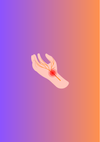
Committees are Stagnant, Last Chance to Join Waitlist, & 4 Nasal Anatomy Essentials
Also: P'Fella's event calendar, the Sunday quiz, & 3 recommended reads.

Also: P'Fella's event calendar, the Sunday quiz, & 3 recommended reads.

The nose is a layered unit: thin bony vault, cartilaginous middle/tip, and skin-soft tissue cloak. Key angles guide aesthetics (nasofrontal 115-130°, nasolabial 90-105°, Goode ratio). Septum, valve, & turbinates ensure airflow; rich carotid vessels and trigeminal nerves supply it.

Hartrampf divides lower‑abdominal TRAM/DIEP flaps into four perfusion zones around the dominant perforator: Zone I being best, and Zone IV worst. Later imaging showed ipsilateral lateral tissue (Zone III) may out‑perfuse contralateral medial (Zone II) & that patterns shift with perforator row.

Microsurgery employs magnification, delicate tools, and 8-0–11-0 sutures to join vessels/ nerves ≤2 mm, powering free flaps, replantation, nerve and lymphatic repair. Outcomes rely on ergonomic setup, meticulous vessel prep, apt end-to-end or end-to-side stitches, and vigilant flap monitoring.

Also: New quiz champs, cortical vs cancellous, & a journal review.

Lipomas are common benign tumours of mature adipocytes, presenting as soft, mobile subcutaneous nodules. Most need only observation, but imaging (US, MRI) and excision are advised for pain, rapid growth, deep/large size, or diagnostic doubt to exclude liposarcoma.

Also: Gluteal danger zones, the Sunday quiz, & 3 recommended reads.

Frostbite is a freezing injury below 0 °C where ice crystals and micro‑thrombosis damage the skin. Re‑warm rapidly in 37‑39 °C water, give NSAIDs, aloe dressings; consider tPA or iloprost for deep cases. Surgery waits ≈6 weeks until clear tissue demarcation.

Data (1998-2018) from a UK study show upper-limb necrotising fasciitis tripled, then plateaued; 64 % of 728 patients were men and mostly from deprived areas. Despite surgery, 30- and 90-day mortality rates were 14 % and 16 %. Early diagnosis & action remain vital, especially in high-risk groups.

In this week's edition 1. ✍️ Letter from P'Fella P'Fella on vacation mode! 2. 🤓 The

Injectable fillers restore volume and contour without surgery. HA gives lift; biostimulants like PLLA and CaHA spark collagen. The filler choice depends on the zone and goals. Adverse effects include bruising, occlusion, and rare blindness. These emergencies may require hyaluronidase.

Also: Foundations in progress, podcast suggestions, & the Sunday quiz.

Flap vascular compromise, arterial ischaemia or venous congestion, usually emerges within 72 h post‑op. Watch colour, cap‑refill, Doppler/NIRS. Early re‑exploration or adjunct venous‑drainage within 6 h can salvage >60 % of flaps; delays sharply cut survival.

Also: Kessler technique in action, EURAPS annual meeting, & the Sunday quiz.

Extensor tendon injuries affect hand and finger extension and are classified by anatomical zones. They result from lacerations, rupture, or attrition, with Zone I injuries (mallet finger) being most common. Assessment includes Elson’s test and imaging. Management varies by zone and injury severity.

The bilobed flap is a two-lobe transposition ideal for small to moderate nasal/facial defects, pivoting around one point to redistribute tension and preserve contours. First lobe matches defect size; second is smaller. While outcomes are great, flap planning or design errors can cause complications.

Also: The Sunday quiz, event calendar, & a video tutorial on fat grafting.

Fasciocutaneous flaps use skin, fat, and fascia (without muscle) for thin, pliable, well-vascularized coverage. Supplied by perforator-fed plexuses, they’re classified by vascular entry or pedicle type. Ideal for trauma and oncologic reconstruction, with low donor morbidity and muscle preservation.

Also: The Sunday quiz, original Quaba flap, & AI surgical studio update.

This study highlights large cost disparities for IMGs in plastic surgery sub-internships: fewer program acceptances and fees 17x higher. IMGs' median cost for ~4.5 away rotations is ~$9K vs. ~$500 for US peers, emphasizing the need for standardized fees and scholarships.

Burn size guides triage, fluids, and outcomes. Lund-Browder is most accurate, especially in children. Rule of Nines is quick but less precise in kids/obesity. Palmar method is handy for small burns. The revised Baux score uses age, TBSA, and inhalation risk to predict mortality. Accuracy is vital.

Also: A fresh round of the Sunday quiz, retention rate of fat grafts, & stats on matching in plastic surgery.

Burn management depends on type, depth, extent, location, and patient factors. Initial care includes cooling, preventing hypothermia, ABCDE assessment, and fluid resuscitation. Wound care involves debridement, dressings, and grafting. Complications range from sepsis to scarring.

Fat grafting transfers autologous adipose tissue for volume restoration, contour correction, and tissue repair. The process involves harvesting, processing, and reinjection. Key complications include fat resorption, necrosis, and embolism.

